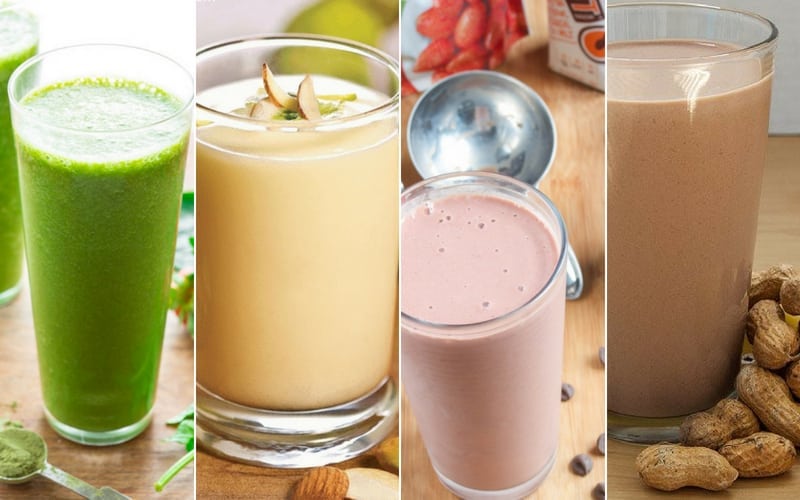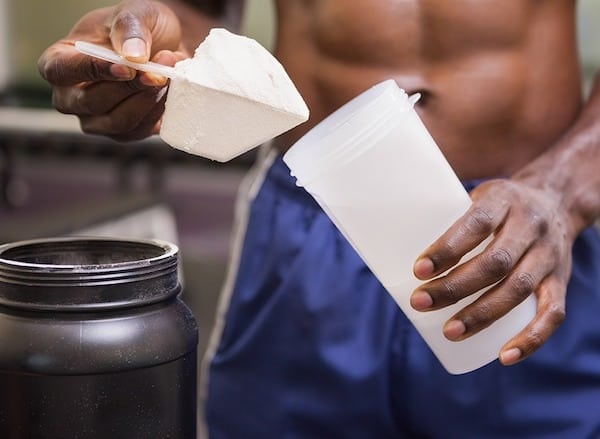No products in the cart.
Essential Tips For Making Your Own Protein Shake

Protein shakes are everywhere at the moment, there are hundreds of variations all offering different benefits.
Some are marketed as dietary aids, some as meal replacements, as performance enhancers, weight loss powders, bulk gainers, and some are promoted as a tool for recovery.
In this article, we will look at the benefits of protein, the different forms of protein available, and how to make the perfect protein shake for your specific needs.[toc]
What are the Benefits of Protein?
There are three main macronutrients, protein, fat, and carbohydrates.
While all three are incredibly important, protein arguably has the most benefits – particularly for anyone who plans on exercising or dieting.
Due to protein being the most difficult macro to be broken down and digested, it raises the metabolism more than either fat or carbohydrates. This process is called the thermic effect of eating, and it can contribute to weight loss as a result.
A 2004 study by Halton & Hu found that a high protein diet increased thermogenesis and therefore weight loss [1].
The study also found that high protein diets increased satiety, which is how full you feel after eating. This is a fantastic benefit for anyone on a diet as it means you will feel less hungry between meals, and therefore eat less.
Another benefit of protein is that it can protect fat-free mass (muscle) while you are dieting.
If your protein levels were very low then you could expect to lose quite a bit of weight during prolonged dieting. This is why people suffering from starvation lose a lot of muscle mass and look emaciated.
High protein diets can prevent this, even when your fat and carbohydrate levels have dropped significantly. A 2013 study by Pasiakos et al confirmed this [2].
Protein is also essential for muscle growth and increased strength, it is required for muscle protein synthesis. This is where protein is used to repair and rebuild muscle fibres that have been damaged during a workout.
An article by Luc Van Loon in Sports Medicine stated that “food intake, or rather protein ingestion, directly elevates protein synthesis rates” [3]. In other words, the more protein you have the more protein synthesis can occur (up to a point).
So protein can help you to lose weight, increase your metabolism, gain muscle, diet, and recover from exercise. A truly fantastic macronutrient, and one that we definitely don’t get enough of on average.
What are the Benefits of Protein Shakes?
There is a common misconception that protein shakes are expensive, and if you were to buy them individually from a store then you’d be right. But when you bulk buy a tub of protein powder it can work out to be extremely good value.
Obviously, this depends on what type of protein powder you purchase, and where you get it from. But on the whole, protein powder is one of the cheapest sources of protein around.
Protein powder is also easy to store, easy to transport, and easy to clean up (provided you do it immediately). It is a versatile product that goes well with water, milk, Greek yoghurt (as an amazingly high protein dessert), in desserts, pancakes, and smoothies.
You can choose from hundreds of different flavours, and even mix some together to create your own.
Different Types of Protein Powder
The most commonly used protein powder is made from whey. There are three main types; whey concentrate, whey isolate, and hydrolyzed whey.
Each represents a different level of purity, but all are effective. The higher the purity the better it is for people who struggle to digest dairy, and the higher the protein to calorie ratio is.
Because whey protein is the most commonly used protein powder, it tends to be used in lots of studies. Hulmi et al 2015 found that whey protein powder led to weight loss when combined with resistance exercise [4].
Another protein powder that is very similar to whey, is casein. This also comes from milk but is a slower releasing protein. Making it perfect for dieting (increased satiety) and recovery.
A lot of people also recommend taking casein before bed, a 2012 study found that ingesting casein immediately before going to sleep led to improved muscle recovery from exercise [5].
Then there are other forms of protein for those who do not want anything related to dairy (vegans, people who are lactose intolerant, and Hindus). You can have hemp protein, pea protein, rice protein, and soy protein.
You can also get protein powder that comes with added ingredients, for example, a lot of companies sell meal replacement shakes that are basically protein powder with a few added supplements. These are designed to be taken instead of breakfast and lunch, and are high in protein and low in calories.
Then there are bulking powders, which are high in protein, but also contain lots of carbohydrates to make a really high-calorie shake. Perfect for anyone who struggles to gain weight or mass while training.
Or you can go to the other extreme and get protein powders that are designed to aid weight loss, ones that have green tea extract added, or similar fat burning ingredients.
Making Your Own Protein Shake

Now obviously you could buy pre-made protein powders to hit your targets but 1) They can be overly expensive, and 2) You are limited to adding the dosages that the company wants to add.
In this section, we are going to look at how you can add your own ingredients and increase the effectiveness of your protein shakes.
We will do one example protein shake for each of the following categories: Weight Loss, Bulking, Performance, and Recovery.
Protein Shake #1. Weight Loss
The trick with weight loss protein shakes is to keep the protein to calorie ratio as high as possible.
This means investing in higher quality protein.
Use water instead of milk to keep calories low, and we’re adding 3 well known fat burning ingredients.
- 2 x scoops of whey protein isolate
- Fill your shaker with water
- Add Green Tea Extract (increases metabolism and fat burning)
- Next, add L-Carnitine (which can raise metabolism and burn fat in people who are deficient)
- Finally, add Yohimbine (which has been shown to reduced body fat in athletes) [6]
Protein Shake #2. Bulking
Before taking a mass gainer protein shake, make sure that this is exactly what you want.
You need to be fully committed to building as much muscle as possible, as you will inevitably gain some body fat in the process. Changing your mind halfway through will lead to bad results.
- 2-3 scoops of whey protein concentrate
- Whole Milk
- Ground Oats (most supplement companies provide this)
- Creatine
- Peanut Butter
Blend all together and serve. If you don’t have a blender then remove the peanut butter and mix in a protein shaker
Protein Shake #3. Performance
This protein shake is designed to be taken 30 minutes before a workout, and as such is going to be light.
It will be similar to the weight loss protein shake, but with a couple of unique differences.
- BCAAs (not as good as whey protein, but lighter, and easier to take before a workout)
- Beta Alanine
- Caffeine 200-300mg
- Creatine
- Niacin
- Vitamin C
Protein Shake #4. Recovery
This last shake is designed to be taken before bed, it will help promote restful sleep, and increase muscle protein synthesis.
- 2-3 scoops Casein Protein
- Whole Milk (produces tryptophan which helps aid sleep)
- Zinc, Magnesium, and Vitamin B6 (ZMA)
- Glutamine
- Melatonin
Combine all in a blender and serve just before going to bed. A perfect sleep aid, and the casein protein, glutamine, and ZMA will help boost recovery.
Final Thoughts
Remember, while your diet is one of the most important aspects of building muscle or burning fat, it is certainly not the only aspect you need to worry about.
You will also need to ensure you are working out intensely and getting plenty of rest too. Use appropriate supplementation is also a good idea.
This link will help you choose which supplement to choose while attempting to build muscle.
